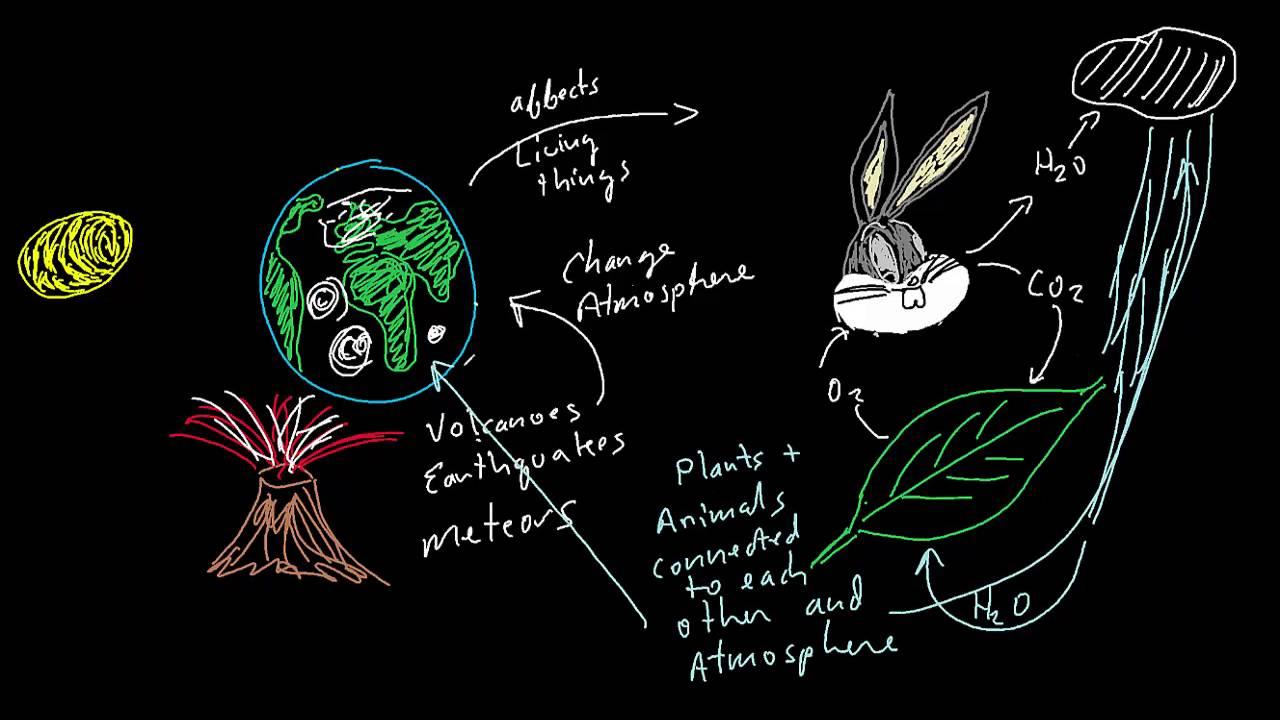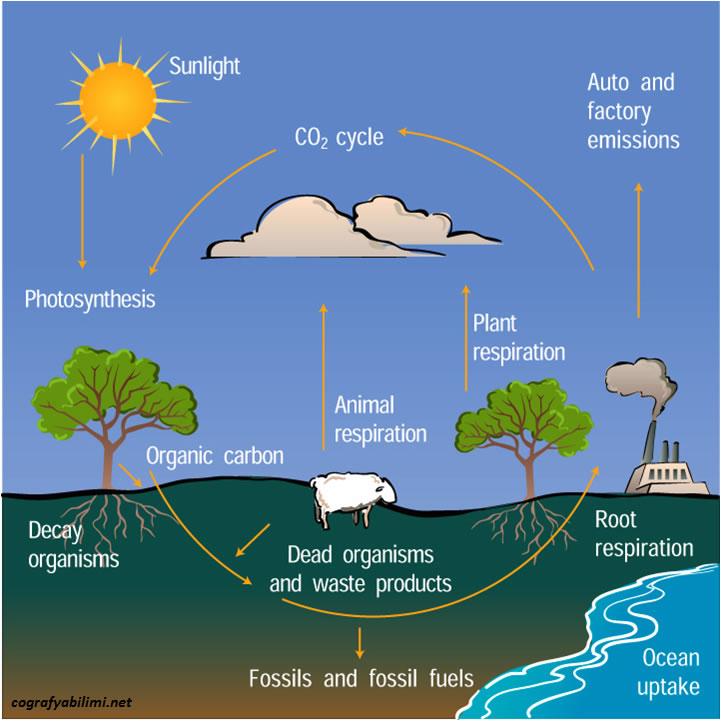Table of Contents
- Understanding the Gaia Hypothesis and Its Conceptual Framework
- Exploring the Key Components of the Gaia Hypothesis Diagram
- Interpreting the Interconnectedness of Earths Systems
- Visualizing Homeostasis: The Role of Feedback Loops
- Practical Applications of the Gaia Hypothesis in Environmental Science
- Q&A
- Closing Remarks

Understanding the Gaia Hypothesis and Its Conceptual Framework
The Gaia Hypothesis, proposed by James Lovelock in the 1970s, presents a revolutionary perspective on Earth as a self-regulating system. Central to this idea is the notion that biotic and abiotic components of the planet interact to maintain conditions conducive to life. This intricate web of interactions forms a delicate balance that sustains ecosystems, climate, and biological diversity. Within this framework, life is not just a passenger on Earth but an active participant in shaping the planet’s environment.
At the heart of the Gaia Hypothesis is a conceptual framework characterized by several key principles:
- Homeostasis: The ability of the Earth to maintain stable conditions for life.
- Feedback Mechanisms: Processes through which living organisms interact with their environment, influencing factors like atmospheric composition and temperature.
- Interdependence: The interconnectedness of all living beings and non-living elements, highlighting how the actions of one can impact the whole system.
This hypothesis facilitates a deeper understanding of ecological relationships and environmental change. It challenges the traditional view of Earth as merely a backdrop for biological activity, instead presenting it as a dynamic system where life and the environment are inextricably linked. The table below illustrates how various elements interact within this framework:
| Element | Interaction Type | Impact on Gaia |
|---|---|---|
| Plants | Photosynthesis | Regulates CO2 levels, contributing to climate stability. |
| Microorganisms | Nutrient Cycling | Decomposes matter, enriching soil and supporting plant life. |
| Oceans | Carbon Sink | Absorbs excess carbon dioxide, influencing global temperatures. |

Exploring the Key Components of the Gaia Hypothesis Diagram
The Gaia Hypothesis, proposed by James Lovelock in the 1970s, presents the Earth as a self-regulating complex system, aiming to maintain conditions suitable for life. At the heart of this hypothesis lies the interplay between biotic (living) and abiotic (non-living) components of the planet. By examining the key elements found in the Gaia Hypothesis diagram, one can appreciate how life influences and is influenced by the Earth’s systems. These components include ecosystems, the atmosphere, and geological processes, all working together in a dynamic equilibrium.
One of the most fascinating aspects of this theory is its emphasis on feedback loops. These loops illustrate how various elements interact to stabilize the climate and ensure the continuity of ecosystems. For example, consider how photosynthesis not only produces oxygen but also contributes to the regulation of carbon dioxide levels in the atmosphere. Other crucial feedback processes include:
- Climate Regulation: Microorganisms modulate greenhouse gas concentrations.
- Nutrient Cycling: The interactions between plants and soil organisms enhance nutrient availability.
- Water Cycle Management: Vegetation influences evaporation and rainfall patterns.
In visualizing the Gaia Hypothesis, diagrams typically highlight the interconnectedness of various systems, emphasizing the importance of biodiversity. A balanced ecosystem, depicted through such diagrams, showcases how diverse biological entities contribute to the resilience of the Earth’s environment. To better understand this relationship, consider the following table summarizing the roles of key components in maintaining ecological balance:
| Component | Role in Gaia System |
|---|---|
| Plants | Produce oxygen and maintain soil health. |
| Microorganisms | Decompose organic matter and recycle nutrients. |
| Atmosphere | Regulates temperature and protects from harmful radiation. |
| Oceans | Act as carbon sinks and regulate climate. |

Interpreting the Interconnectedness of Earths Systems
At the core of understanding Earth’s systems is the recognition of their intricate web of interactions. Each component, from the atmosphere to the biosphere, plays a pivotal role in sustaining life. These systems are not just isolated entities; rather, they are interdependent, forming an elaborate network where changes in one area can ripple through others. For instance, deforestation not only affects the local climate but also disrupts water cycles and impacts biodiversity, showcasing the necessity for a holistic approach in environmental studies.
Additionally, the feedback loops present in Earth’s systems highlight the dynamic nature of these interactions. Consider the following factors that illustrate this interconnectedness:
- Climate Change: Rising temperatures influence ocean currents, which in turn affect weather patterns.
- Carbon Cycle: Increased carbon dioxide from human activity leads to enhanced greenhouse effects, altering climate systems.
- Ecological Relationships: Species extinction can lead to ecosystem collapse, which subsequently affects other life forms dependent on those ecosystems.
Visual representations, such as the Gaia hypothesis diagram, serve as valuable tools in comprehending these complex relationships. These diagrams often incorporate graphs and charts that illustrate how various systems interact, offering a snapshot of our planet’s health. Here’s a simplified comparison table that outlines some key Earth systems and their interconnections:
| Earth System | Key Interaction |
|---|---|
| Atmosphere | Affects weather and climate patterns influencing all terrestrial life. |
| Hydrosphere | Drives weather cycles and regulates temperature through oceanic currents. |
| Biosphere | Relies on nutrient cycles to sustain plant and animal life. |
Visualizing Homeostasis: The Role of Feedback Loops
The concept of feedback loops plays a critical role in maintaining balance within ecosystems, guiding us in visualizing how various components interact to sustain life. Feedback loops can be categorized as positive or negative, each influencing the system in different ways. Understanding these loops is essential for comprehending the delicate equilibrium described by the Gaia Hypothesis, which posits that living organisms and their inorganic surroundings are closely integrated to form a single, self-regulating system.
Negative feedback loops are crucial for promoting stability. They work by counteracting changes, thus returning the system to its ideal state. For example, when the temperature in a given ecosystem rises, organisms may increase their metabolic rate, leading to increased respiration, which in turn can lower carbon dioxide levels and cool the environment. This process exemplifies how life can regulate itself through intricate interactions. Meanwhile, positive feedback loops, although less common, can drive changes to a larger scale. An increase in a population might lead to more organisms altering their habitat, thus creating conditions that further support that growth.
To visualize these dynamics, consider the following table highlighting different feedback mechanisms in ecosystems:
| Feedback Loop Type | Example | Effect on System |
|---|---|---|
| Negative Feedback | Temperature Regulation | Stabilizes |
| Positive Feedback | Population Growth | Amplifies Change |

Practical Applications of the Gaia Hypothesis in Environmental Science
The Gaia Hypothesis, which proposes that the Earth functions as a self-regulating, interconnected system, has profound implications for environmental science. It suggests that living organisms and their inorganic surroundings maintain favorable conditions for life through various feedback mechanisms. This holistic view encourages scientists and policymakers to consider the impacts of human activities on the biosphere as part of a larger ecological framework. By adopting this perspective, environmental management can shift from isolated approaches to integrating multiple ecological factors.
One of the practical applications of the Gaia Hypothesis is in the realm of climate change mitigation. Understanding Earth’s system as a cohesive entity allows researchers to study the interactions between atmospheric carbon levels, ocean chemistry, and biotic responses in a more interconnected manner. This can lead to innovative strategies such as restoration ecology that focuses on enhancing biodiversity to improve ecosystem resilience against climate shocks. Similarly, conservation efforts can be more effectively designed by recognizing how habitat destruction impacts not just local species but also global ecosystems.
Another area influenced by the Gaia Hypothesis is sustainable agriculture. By applying principles of ecological interdependence, farmers can implement practices that mimic natural processes to enhance soil health and promote biodiversity. Strategies might include crop rotation, agroforestry, and organic farming, all of which support a more resilient farming ecosystem. These applications not only improve yield and soil quality but also help to counteract the degradation often caused by intensive agricultural practices. Below is a table summarizing some approaches:
| Approach | Benefits |
|---|---|
| Crop Rotation | Increases soil nutrients and reduces pest populations. |
| Agroforestry | Enhances biodiversity and improves water retention. |
| Organic Practices | Reduces harmful chemicals, promoting healthier ecosystems. |
Q&A
Q&A: Understanding the Gaia Hypothesis Diagram
Q1: What is the Gaia Hypothesis?
A1: The Gaia Hypothesis, proposed by scientist James Lovelock in the 1970s, posits that Earth functions as a self-regulating system where biological and inorganic components interact to maintain the conditions necessary for life. Essentially, the planet behaves like a single organism, adapting and responding to changes in ways that promote stability.Q2: How does the Gaia Hypothesis Diagram represent these concepts?
A2: The Gaia Hypothesis Diagram visually illustrates the interconnectedness of Earth’s systems. It typically showcases various components such as the atmosphere, lithosphere, hydrosphere, and biosphere, highlighting how they interact and influence one another. In this way, the diagram emphasizes the holistic nature of Earth as a living entity.Q3: What are the key components shown in a typical Gaia Hypothesis Diagram?
A3: A typical diagram includes:- Atmosphere: The layer of gases surrounding the planet.
- Biosphere: All living organisms and their interactions.
- Hydrosphere: The Earth’s water bodies, including oceans and rivers.
- Lithosphere: The Earth’s crust and soils.



0 Comments